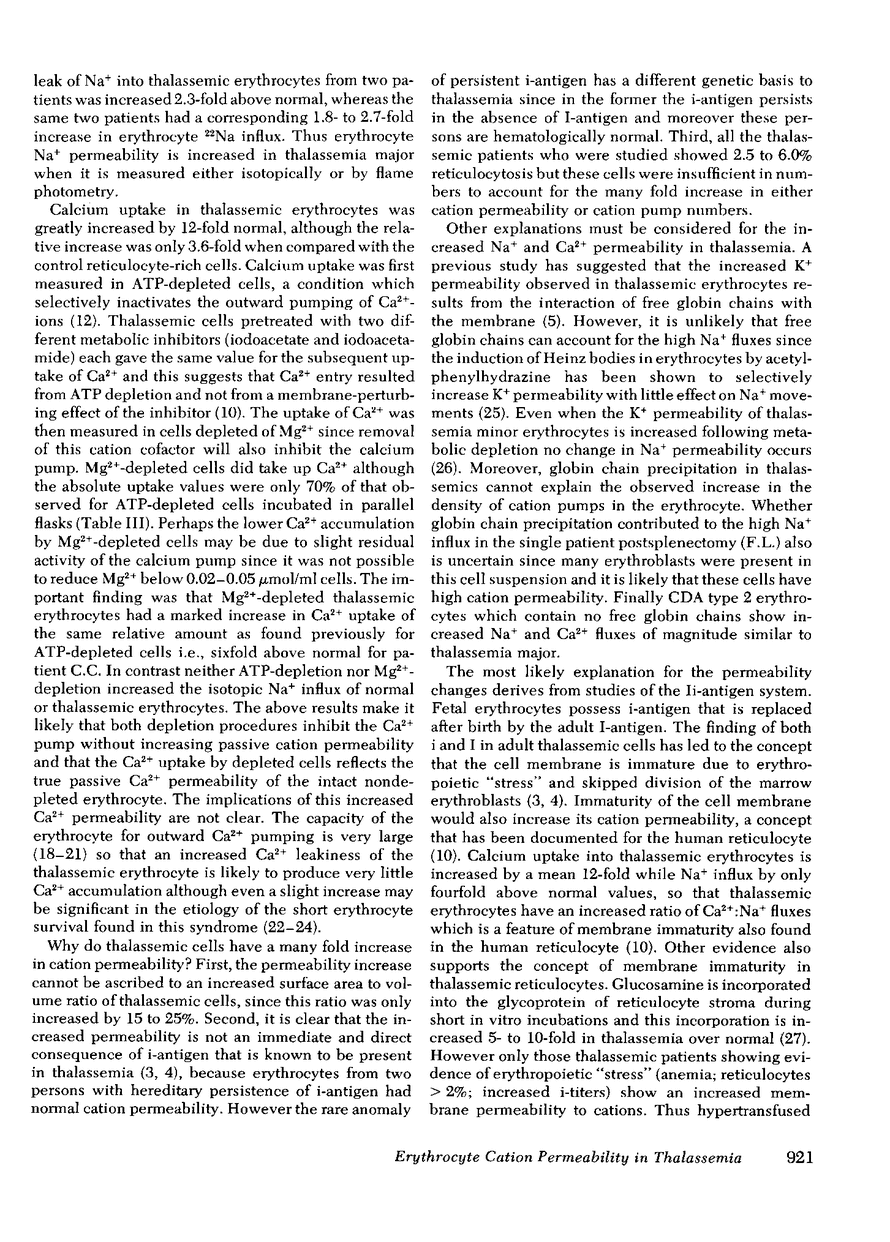Abstract
Calcium and sodium permeability of erythrocytes from patients with untransfused α- or β- thalassemia major has been studied and compared to mature erythrocytes or control cells with comparable reticulocytosis. Isotopic Na+ influx was increased a mean fourfold greater than normals and threefold greater than reticulocyte rich control. Passive net leak of Na+ into thalassemic cells incubated with ouabain was also increased corresponding to their greater 22Na+ influx. Erythrocyte Na+ and K+ concentrations and cell water content per unit volume of cells were normal. Quantitation of active cation pumps in the cell membrane by the technique of [3H]ouabain binding showed a 2.6- to 9.9-fold increase above normal. Inward Ca2+ movement was studied in cells with absent Ca2+ pumping produced by depletion of either ATP or Mg2+-ions. Calcium uptake by ATP depleted thalassemic cells was increased 12-fold above normals and 3.6-fold above reticulocyte-rich controls. The Ca2+ uptake by Mg2+-depleted thalassemic cells was also increased above normal confirming that erythrocyte Ca2+ permeability is increased in this disease. Osmotic fragility measurements show that the surface area to volume ratio of thalassemic erythrocytes was increased by 15 to 25% above mature erythrocytes. The increased passive cation permeability of thalassemic erythrocytes cannot be explained by either reticulocytosis or an increased surface area to volume ratio of these cells. Moreover, erythrocyte Na+ and Ca2+ influxes in congenital dyserythropoietic anemia (CDA type 2) were increased 2- and 14-fold, respectively, above normal. The increased cation fluxes and cation pump numbers in thalassemic and congenital dyserythropoietic anemia erythrocytes are consistent with the hypothesis of membrane immaturity arising from rapid marrow transit times, a concept previously advanced to explain the persistence of i-antigen on these cells.
Authors
J. S. Wiley
Other pages:
| 917 | 918 | 919 | 920 | 921 | 922 |




